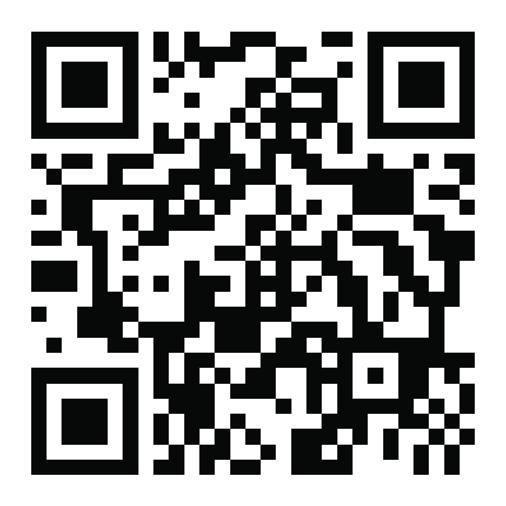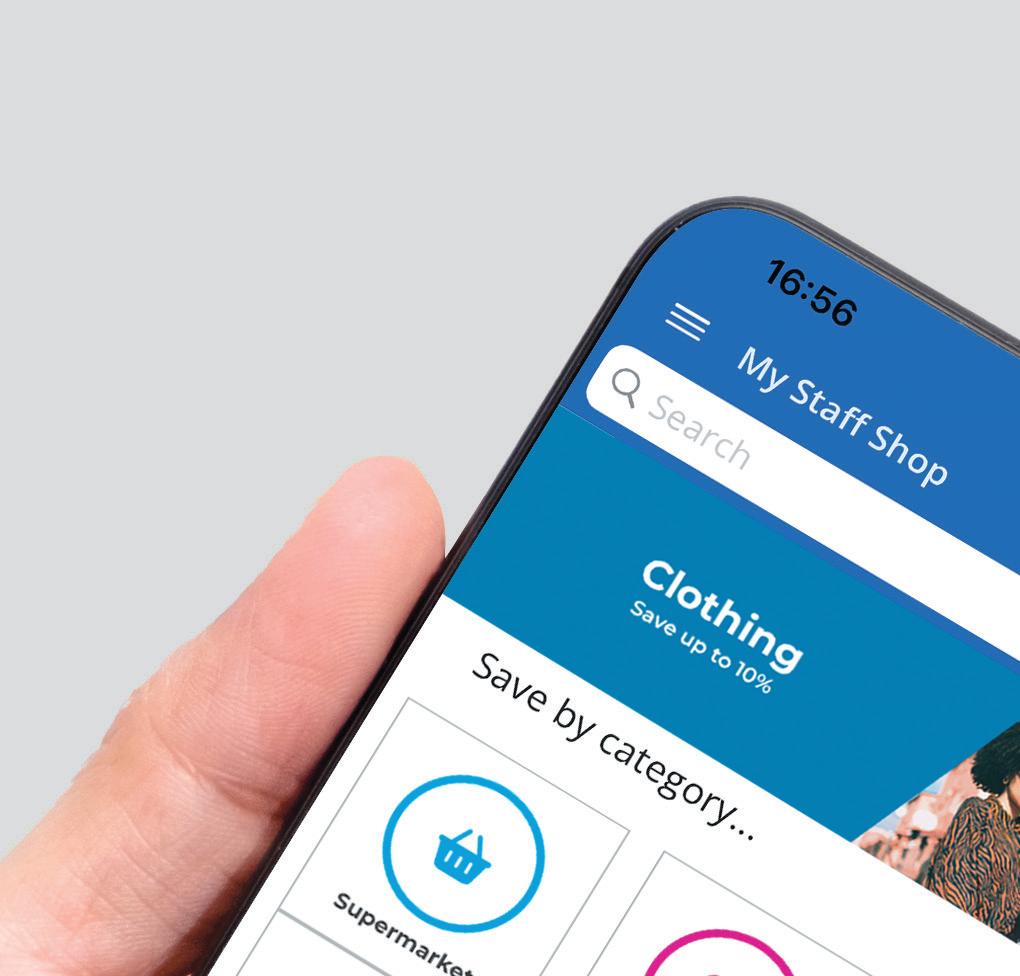My Little Book of Employee Benefits


A Guide for HR & Reward Professionals



THE PROBLEM WITH BENEFITS AND HOW TO FIX THEM




















THE PROBLEM WITH BENEFITS AND HOW TO FIX THEM















Employee benefits have long been a ‘nice to have’ for many organisations – whether it’s a pension offering, a Cycle-to-Work scheme, the now defunct childcare vouchers or some form of perk to entice senior managers to up their game and, of course, as a recruitment tool.



There is now a collective acceptance that employers need to respond to employees’ changing appetites and demands. Feeling valued and appreciated, and having a sense of belonging, is more relevant than it’s ever been. Finding that culture fit has become a core part of the job seeker’s quest and, as we know, a business is nothing without its people.
As an organisation, your response is critical, and how you decide to shape your benefits strategy can be the difference between employees heading for pastures new or staying with you, working hard, being engaged and motivated and becoming real advocates for your business. This now puts the emphasis on reward leaders, HR Directors or those responsible for engaging employees to create a strategy that responds to those employee demands.
This guide – the first in our series – aims to provide an overview of workplace benefits and the solutions that employers can implement in order to respond to this changing and challenging benefits landscape. It has been produced to enable you to dip in and out, as needed. We hope you find it useful and that it can bring some clarity and focus to your own evolving benefits strategy, to help align with your strategic objectives and to create a happy and motivated workforce that remains engaged and productive.



Employees are voting with their feet when it comes to their benefits wish list



The disruption over the last few years coupled with the cost-of-living crisis and socio-economic instability has given people pause to consider the overall experience they have at work. Employees now expect their leaders to support and enhance their wellbeing both inside and out of the working environment – whether that is remote, hybrid or in-office. They want them to choose relevant and targeted benefits that enrich their lives and recognise and reward the effort they put into their work.
An increasingly fragmented workforce has differing needs and requirements. This has placed immense pressure on HR and reward functions to reimagine – and deliver – a new and improved employee experience, all of which can be underpinned by an optimum benefits strategy.

People are in employment for longer than ever before, and for the first time in history, we have five generations working side by side: The Silent Generation, Baby Boomers, Gen X, Millennials and Gen Z. This takes some creative benefits strategising, as each of these demographics has widely differing ideas on what they want from their employer.
60% 62% 40%
of employees would take a pay cut for flexible hours and location
OwlLabs State of Homeworking Report 2022

of businesses have changed their benefit offerings in the past year




Forbes Advisor, 2023
of employers say they believe workers leave their job to find employment that offers better benefits
Forbes Advisor, 2023


shaping the benefits that modern workforces

Here are some of the current trends that are shaping the benefits that modern workforces are demanding – and expecting – from their employers.

Location! Location! Location!
Hybrid working, in-office or remote working is just one aspect that HR needs to include in its employee benefits strategy. This means creating flexible working options to accommodate differing needs and also having the right tech in place to deliver a consolidated and consistent experience to all employees, regardless of their location.
Having a user-friendly benefits portal that is accessible to all your people whenever they need it can help unite employees, and prevent remote workers or out-of- office staff to feel disconnected or unappreciated.



A unified benefits strategy can underpin a connected and harmonious organisational culture.
The tight labour market and rising inflation are pushing workers to demand better pay and improved benefits. This has prompted employers to shape specific benefits such as retirement savings programmes, financial wellbeing check-ups, and opportunities for lifelong learning and reskilling. Organisations are also offering more structured benefits around menopause and fertility, and grandparents’ leave, all of which are designed to attract, reward and retain women, mature workers and those with the skills needed to future-proof the current workforce.
39% of Gen Zs say health insurance is the most important benefit

Career development is prioritised by 46% of Millennials and 42% of Gen X Gen X (64%), Baby Boomers (59%), Millennials (58%) and Gen Zs (53%) all rate job prestige as their highest priority in their work Forbes Advisor, 2023






Fuel and food prices are currently at their highest since the 2008 financial crisis and everyone is feeling the pinch. With unstable economic and tax changes, and energy bills soaring 14 times faster than wages, people are struggling to make ends meet. Considering that almost the entire working population of the UK are low and middle-income earners, a focus on salary-stretching benefits is an attractive proposition for employers.
Offering benefits that provide a tangible difference to people’s finances is increasingly popular. Not only do they help build financial resilience for your staff by giving them control over their spending – and even encouraging saving habits – but they can help improve mental health and wellbeing.


A pressing issue for many right now is the soaring cost of day-to-day living. Figures from the *Financial Conduct Authority revealed that 40% of households are struggling to manage their bills. We know that the last few years have seen astronomic increases in fuel, food and utility bills, but employers can help make their people’s lives a little easier. Employee discounts are a simple and useful benefit that can really make a difference to the monthly pay packet.
ityFinancial Lives January 2023, Financial Conduct Authority




4 million


days are taken off every year because of financial worries
50%
increase in the number of employees struggling financially over the last 10 years
11 million workers have less than £100 in emergency savings
54%
don’t have any financial plan at all
Maji, 2023
While the cost-of-living increases are out of our hands as employers, there has never been a more appropriate and timely opportunity to invest in an employee benefits scheme. Not only can this help your people ride out the current challenges, but it can serve as a means of financial education.
Alongside the statutory offerings that all workers are entitled to, employers have the opportunity to select the best benefits to suit their workforce. This can vary from sector to sector and across the various socio-economic demographics but here is a breakdown of the benefits we think are the primary choice for the majority of employees.
Money off the weekly grocery shop resonates more now with people than at any time in the past decade. One way that HR can harness this engagement is to promote the positive behavioural changes that will impact people, help them save and gain control over their finances – this in turn will boost mental health and reduce stress associated with financial worries.
“Discounts and cashback offer a tangible solution for employees to stretch their salaries. Our estimates show that up to £1000 a year can be saved simply by adjusting spending habits slightly.”
 Gemma Googan, Quality & Operations Director, My Staff Shop
Gemma Googan, Quality & Operations Director, My Staff Shop
SAVE ON EVERYTHING FROM:
• Fuel
• Supermarket shopping
• Travel and commuting
• Essential household goods
• Cars and motoring
• Holidays
• Utilities like internet/phone



• Self-improvement and learning
• Health and fi tness
• Eating out
• House/motor/pet insurance
• DIY and home improvement
• Fashion and beauty
• Entertainment and days out
• Hobbies
One of the things that can be an added benefit of a smart discounts and savings strategy is the opportunity to provide a long-term savings plan for employees.
We have our own virtual currency – Reward Beans –which can help people make better financial decisions and take control of their spending at a time when things appear to be out of control. For example, a 4% discount may not seem like much but over the course of the year, it can make a real difference.
If employees swap the instant cashback or discount for Reward Beans, they save more – 4.5%. This can be saved up over the year and be used towards big ticket items like holidays and Christmas gifts or saved in an Instant Savings Account (ISA) to build up interest and provide a bedrock for future savings.
Financial worries are taking their toll
UK adults were more anxious or stressed due to the rising cost of living
of UK adults felt that keeping up with household bills was a burden
of the UK population have missed bills or loan payments on at least three occasions
*Financial Lives January 2023, Financial Conduct Authority
There is a huge amount of unlocked potential sitting within benefit schemes. By tapping into them, HR can help mitigate the stresses that the current financial squeeze will have on workers. Not only that, but it also provides them with the tools to build their long-term financial resilience at the same time.
Consumer spending habits have changed considerably over the last 10 years both in terms of what people buy and the tech used to facilitate purchases. Change is about more than helping people make the right decisions, it’s about helping them sustain positive buying habits. When it comes to implementing discount campaigns, there are elements that will make the process more successful. Seeding savings ambassadors across the organisation to spread the word about the benefits of the platform. Peer-to-peer reviews are an excellent engagment tool.
What have you done to understand the needs of your workforce?
What is the current level of financial education amongst your people?
Who is going to champion your discounts and savings strategy?
Our people are making savings just through their weekly shop and are seeing a genuine, tangible impact. It is becoming a normal part of their daily life. In just a few months they have already made significant savings. Pretty much everyone is choosing to use Reward Beans rather than having the cashback or discounts and they’re getting a month’s worth of shopping paid for free.


Occupational stress and poor mental health remain an issue for HR managers. From attrition, long-term sickness requests or increasing absenteeism cases due to burnout, employees’ mental, emotional and physical wellbeing is critical to achieving a productive workforce, and maintaining a positive and healthy workplace.
In the UK, sick days cost the economy
£14bn annually

Mental health illness and work-related stress is losing UK businesses 23.3 million working days
48% of all absenteeism cases are caused by stress and mental ill health






The Centre for Economics and Business Research, 2023
Leaders are now seeing the importance of balancing wellbeing and work-life. Instead of simply providing static resources, it’s about taking a holistic approach to your people’s wellbeing and offering the tools to help people better manage their health, and at the same time enhance the employee experience.
In-the-moment support
Minimal triage




Counselling assistance

Career coaching and educational support






Parental guidance and support
Money management assistance
Legal advice
Health and wellbeing resources

Incoming calls to Spectrum.Life’s employee assistance programme for support with stress, anxiety or depression increased by 20% in Q1 2023 compared to the same time in 2022 with the average call answer time being nine seconds when someone is in distress.
Taking the Engage, Empower and Transform approach, people are actively engaged with the necessary resources and guidance to help them take control over their mental wellbeing.
Individuals are empowered to make positive changes and develop healthier habits which ultimately foster personal growth and transformation.
Employers that engage with our digital health and wellbeing interventions report a 20x increase in mentally healthy employees and an average increase in productivity of 43%.
provide
While HR can’t wave a magic wand to solve everyone’s problems, creating a wellbeing package as part of the company’s benefits strategy will help your people better manage their issues, provide professional advice and signpost them to the services they need – when they need them.

Employees need to feel that their employer has ‘got their back’ when times are tough. An Employee Assistance Programme (EAP) speaks volumes about the importance an employer places on its workforce’s health and wellbeing.

An EAP will provide free, 24-hour confidential advice on all manner of issues, whether that is a counselling session, financial guidance or providing legal resources. This valuable benefit is also an incredibly attractive proposition for attracting new talent.
Do your colleagues know what is available to them – and how to access those resources?
If needed, how quickly can colleagues at crisis point get help? Is triaging via your current EAP fast enough?
What insights are available to help you understand the health and wellbeing of your people?
What are the barriers to improving health and wellbeing in your organisation?
goals, placing a focus on health, nutrition and wellbeing and offering benefits that support these
Whether you offer your people a digital wellbeing platform with access to things like meditation classes, yoga and fitness sessions, or somewhere that employees can track fitness or wellness goals, placing a focus on health, nutrition and wellbeing and offering benefits that support these areas will create an uplift in mood. This feeds into the employee experience too and provides that sense of security that people are searching for at the moment.

Have you got health and wellbeing champions seeded across the business?

A good EAP
Dr Emelina Ellis, Chief Clinical Operations Officer, Spectrum.Life
should provide?

Having the right eco credentials can set you apart from your competitors, attract new talent and provide a better employee experience for your people. Forward-thinking Reward Directors and HR leaders have recognised the need to refresh their benefits offering in order to attract, retain and engage employees for whom sustainability is an increasingly critical consideration when choosing – or staying with – an employer.


Your CSR strategy can have a demonstrable effect on recruitment and retention Only 21%


of people consider their current employers to be sustainable people who changed jobs in 2022 accepted a position with an employer they consider environmentally sustainable accepted a job where they can directly influence sustainability outcomes



There are several Salary Sacrifice Schemes available for employers to offer their employees such as Electric Vehicle (EV) programmes, and the ever-popular Cycle-to-Work Scheme.
Electric car initiatives in particular are the latest benefits to have caught the attention of employees. With all fuel vehicles being phased out by 2030, now is the ideal time to get your teams on board. It allows employers to demonstrate their commitment to sustainability and can be further supported by offering things like access to charge cards, charge point subscriptions, and installing electric charging points.
On average, businesses can save 8.2 tonnes of carbon every year by joining a salary sacrifice scheme and a driver of a small hatchback can save circa £101 on an EV on Salary Sacrifice compared to an ICE equivalent per month. It is clear these schemes can support companies’ ESG commitments while providing a great perk to the employee.
Octopus EVs salary sacrifice scheme is a really simple way to show your employees you care about fighting climate change while giving them the chance to save considerably on the monthly cost of a brand-new electric car.
With zero set-up fees, companies can hit net zero targets, boost their benefits package, and save on National Insurance while providing their team with a complete EV package including car, charger, energy, insurance, servicing, maintenance, breakdown, and tyres.
 Tom Baker, Partnerships Executive, Octopus
Tom Baker, Partnerships Executive, Octopus




















HR is in a prime position to promote and support sustainability across its benefits offering and prioritising green initiatives is the ideal way to do this. Not only will it help them hit their own CSG goals, but it is a great engagement tool for an increasingly switchedon workforce that places sustainability near the top of their list of must-haves in an employer.









Reminding employees that there is a multitude of eco-friendly swaps to up the sustainability quota is an easy win. Including a sustainability category for any discount offering shows that you are committed to improving the environment and supporting their desire to fight climate change.
Switch out daily shopping items for eco and Fairtrade products, buy refurbished tech and drop the fast fashion for more ethical labels. Ask your benefits provider how they can support your business’ sustainability goals.




What is the business’ carbon footprint, and how can employee benefits help to reduce it?





How does your current employee benefits strategy support your ESG goals?





























Is your Cycle-to-Work scheme fit for purpose?



What are you doing to support the move to EV?
How are you fostering a more sustainable mindset across the workforce?

Attract and retain top talent with one of the most popular employee benefits QUESTIONS


A pertinent benefit at present – and one which has seen the highest demand from employees across the board, is health insurance. Data shows that it is the most commonly offered benefit which makes it one of the simplest but most effective steps you can take to reward and attract talent*.
Showing your people that their health is paramount, can increase productivity and promote a positive company culture.
The current NHS waiting list has around 7.22 million people in line for treatment with 3 million waiting over four months and 362,500 waiting for over a year for their treatment.
Research suggests that this figure is unlikely to go down any time soon, making the option of health insurance a very attractive proposition for potential new hires and as a tool of engagement for your current talent.
Not only can these benefits enable staff to access treatment faster and at more convenient times, but it gets them back on their feet sooner.
There is a wide range of options available, but the most common types include:



Basic health benefits such as outpatient and inpatient care and coverage for dependents



Additional benefits include women’s health insurance such as maternity and fertility coverage, transgender coverage, vision and dental insurance and cancer insurance
Comprehensive benefits including wellbeing and mental health support packages










*British Medical Association, 2022


1 in 3 people in the workforce will get cancer. Are you providing financial protection?













How does your health insurance plan fit with the company’s wellbeing strategy?

Does your health insurance include dependents and provide mental health coverage?
Is your insurance scheme DEI-focused and does it accommodate the diverse profiles within your organisation?
Since January 2023, 30% of all benefits taken out through My Health Xtras were for cancer insurance. This shows staff are looking at their longer-term health, rather than immediate concerns such as dental and optical. This is a massive increase on the same period in 2022 when only 2% of the benefits taken out in that period were for cancer insurance.
Not only are employees engaging with benefits that have historically been popular, such as cash plans offering refunds on optical, dental and therapies or hospital cash plans offering money for time spent in hospital, but they are also looking at protecting their wider health, through products like our cancer insurance.
Jonathan Breakell, Director, My Health Xtras




Pensions can be confusing. From the complicated jargon, endless forms and technical information it feels like you need a degree just to disseminate it all. However, the benefits of a workplace pension are huge for employees.




In the UK, participation in the state pension system is mandatory and consists of a basic state pension and an earnings-related additional pension known as the state second pension. These are financed via National Insurance contributions (NIC) which are related to an employee’s earnings. Outside of the state pension, there are many possibilities for personal pension provision within the UK and each has different rules and regulations regarding employee eligibility, employee contributions and employer contributions.
With the advent of auto-enrolment, the provision of a pension scheme for employees is mandatory for all but the smallest employing entities. The two main types of workplace pension are:




A defined benefit pension is a pension which has a guaranteed benefit at retirement, regardless of the contributions. These were common in the public sector and were popular in the private sector previously.
There is a risk for employers who provide these as the liability for the pensioner’s payments is included on the entity’s balance sheet. To remove this risk most employers now prefer to offer defined contribution pensions.
The Trustees who manage the pension assets of defined benefit pensions have to comply with investment rules set out for them.

Defined contribution pension means that the contributions define the amount of the pension. The contributions can be from the employee and the employer.
Employers often match employee contributions to a certain level, sometimes they offer more (or less) but under auto-enrolment, there is a minimum that the employer must pay if the employee makes their contribution. For employers, their liability for the pension is limited by their contributions (there is no balance sheet liability as the pension provider operates the pension independently of the employer).
The contributions are invested in funds by the pension provider, these funds can often be chosen by the employee, either way, the pension investments should reflect the employee’s lifestyle, age (how close to retirement and required access to the pension pot) and risk profile.
The funds can be a mix of investments – generally, stocks/shares/bonds/real estate and commodities. Often the pension fund provider will have access to all areas of the world for investing. to all areas of the world for investing.


There are also ‘cash balance’ or ‘Collective DC’ (CDC) schemes in the UK which are gaining in popularity. For a definitive guide to UK pensions, we would always recommend that you speak to a financial advisor or pensions expert.

Do you know the criteria for auto-enrollment eligibility?


Does your provider have a good selection of funds for investment?






Do your employees know the current UK state pension eligibility and time frame factors?




Is it time to perform a pension review in your organisation?





Offering a competitive pension package enables employers to demonstrate their commitment to the future financial needs of their employees, long after they have retired, giving them peace of mind, knowing that they are providing long-term security for themselves and their families.
Martin Jones, Finance Director, My Staff Shop
Is your solution making an impact on your people?
Reward & Recognition (R&R) is not strictly a benefit that would be stipulated in an employment contract; however, we feel it is worth a mention, mainly because it forms such an integral part of your company culture and is inextricably linked with the employee value proposition (EVP). Our experience shows that effective R&R can improve the employee experience and can be seamlessly integrated into your benefits solution.
We know that a culture of appreciation within the workplace is a means of fostering a positive environment; and an easy-to-use system that provides a ‘thank you’, ‘congratulations’, or ‘great job!’ in-the-moment can be incredibly powerful.
Most employers have some form of R&R – whether it’s a timely email, virtual noticeboard, or a dedicated R&R solution. A well-structured recognition scheme has a multitude of benefits from dealing with internal silos (which can all too often be the source of employee dissatisfaction), to providing a muchneeded reminder that you are valued when the chips are down. That said, having a recognition platform in place is all good and well, but employees need to feel motivated and engaged in order to use it.


By making sure any programme you offer aligns with the organisation’s purpose and values, you are restablishing the fundamentals and showing the importance of a transparent culture. These are all critical drivers for engagement.
It can be as simple as providing desk fans during a heat wave, giving out cinema tickets or high street shopping vouchers for completed projects or providing a healthy organic fruit and veg box to employees for their hard work. Ultimately, an R&R strategy that encompasses discounts, cashback and other enticing perks offers flexibility for the employer. Not only does HR spend less time on issuing any rewards but it frees them up to concentrate on other problems that might need their attention. Yes, an Amazon voucher is great, but getting money off the weekly shop is better, particularly in the current climate.
Employee mental health is in sharp focus for HR at the moment and using psychological drivers such as reciprocity and appreciation can be a tool to help boost engagement and motivation, and remind employees of why they want to work in your organisation.

Psychologists have determined there are two means of motivation. Extrinsic is when we are motivated to perform a behaviour or engage in an activity because we want to earn a reward or avoid punishment. Employees perform their duties because they get paid and will be able to pay their bills or take holidays, for example. They expect to get something in return or avoid something unpleasant.

Intrinsic motivation is a whole different ball game. This is when you engage in something because you find it rewarding. The activity is performed for its own sake rather than from the desire for some external reward. In other words, the activity or behaviour is its own reward. The secret to engaging and motivating your staff is to motivate people intrinsically, so they feel that they are doing a great job, and that is where your benefits strategy can really help. Building your company’s core values into any benefits offering helps tie together the cultural cornerstones of your business and align reward and recognition accordingly.





Want to provide psychological safety and promote openness within the workplace? Then it’s time to improve your peer-to-peer recognition. This simple but effective process not only offers the positive outcomes of motivation and engagement, but by empowering our colleagues to celebrate each other’s successes, it helps foster collaboration and builds empathy amongst workers. The challenge for managers now is to encourage teamwork between increasingly dispersed and fragmented teams.

However, evidence suggests that a culture of recognition and appreciation, whereby employees give and receive thanks, has the potential to deliver substantial rewards.
Is your current R&R scheme being used by everyone? If not, why not?
How user-friendly and flexible is your current R&R offering?
Can you deliver rewards quickly, in-the-moment, and provide relevant and useful benefits?







What are you doing to measure how valued and recognised your people feel?
Are legacy systems causing additional admin burden?






Culture, comms and tech are the crucial components to nailing your benefits strategy. Get these right, and the rest should follow
There has never been a better time to refocus on the organisational culture of your business. In fact, a study from Glassdoor found that a toxic work culture was one of the biggest factors in people quitting*. The report highlighted that the culture and values of an organisation, coupled with the quality of senior leadership, and clearly defined career progression opportunities are essential to provide an optimum employee experience. These elements can be enhanced and supported by a well-planned employee benefits strategy.
Employees think about health benefits most during onboarding or in a moment of need, but all too often they have little awareness of what programmes are available or how to access them. As benefits have evolved to consist of so much more than simple wellness offerings and deductible choices, this disconnect is something that employers must work to fix. This is where comms plays its part.
The most successful benefits schemes have data-driven communications at their core. Speaking to employees is the only way to get a feel for what they want. For example, is wellbeing a priority? Is health insurance a non-negotiable? Perhaps sustainability has crept up the agenda, or maybe discounts on food bills or fuel will swing the balance? Using internal comms and pulse surveys or hosting employee focus groups will help you gain a better understanding of the things that your people want – and expect from a benefits solution.
Having a digital solution that combines benefits, rewards, recognition and communications – but also offers actionable metrics which can be used to inform and improve the overall employee experience, is the route to engagement. This could even include metrics to track the emotional impact of reward and recognition on your people, pick out trends, and show any areas of disengagement. Getting the tech right puts the employee in the driving seat so they can access and understand the benefits and rewards available – and reminds them of everything that you, their employer, do for them. This daily reminder can really underpin your culture, and show them that you understand their needs and are responding.
What’s the point of offering robust benefits if employees don’t know how to utilise them? These days workers expect a consumer-grade tech experience from their organisation. From the various digital touchpoints in their everyday work to their access to perks and rewards; getting it right will influence how successful any benefits initiative will be.
The first hurdle in rolling out any R&R strategy is activation and engagement so we incentivised all our people with Reward Beans to prompt them to change their spending behaviour resulting in 99.6% activation. Post launch, a joined-up communication strategy with your benefits provider is crucial to remind employees of how they can benefit from using the discounts and rewards. This has taken the pressure off my team and empowered our people to make informed choices about how they spend.
Liz Dixon,1.
Is your offering accessible? Optimised? User-friendly?

2.
Do your people check in regularly to see what is on offer?
3.

Do they know how to use the Platform?
What words would they use to describe the company culture and values?
How do your comms support your wider benefits strategy?



















My Staff Shop is a one-stop benefits hub that brings employee benefits, reward and recognition, and communications into a single centralised Platform. Streamlining your benefits in this way aligns with the organisation’s strategic business goals, allowing you to measure the impact of any campaigns; providing a cohesive and agile solution and an overview of how engaged your people are –what works for them – and what isn’t cutting the mustard.














Founded in 2011, My Staff Shop has served clients from small businesses to large multi-location organisations. In 2022, we became an Employee Owned Trust – in fact, we are the only EOT Employee Benefits Business in the UK. We are proud to work hard with our clients, to design the best possible employee benefits solutions to help their people flourish and future-proof their workforce.




For a demo of how our Platform works and a chat about how we can create the perfect, tailored benefits solution for your organisation, visit www.mystaffshop.com and fill in the contact form, call us on 03300 242281 or email info@mystaffshop.com. If you want to get future editions of the My Little Book of series visit www.mystaffshop.com/MLB.


